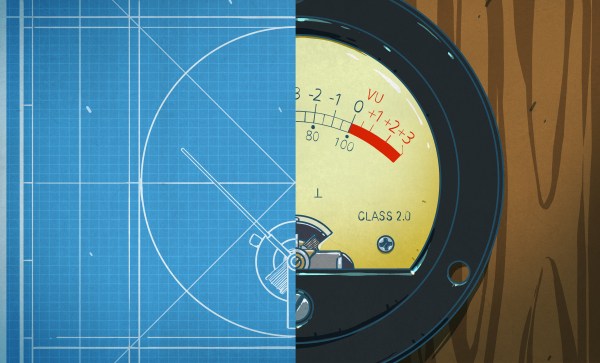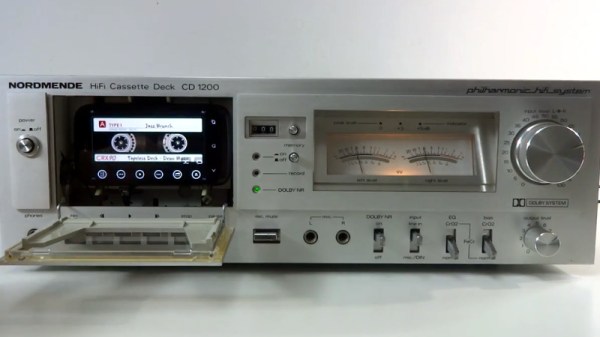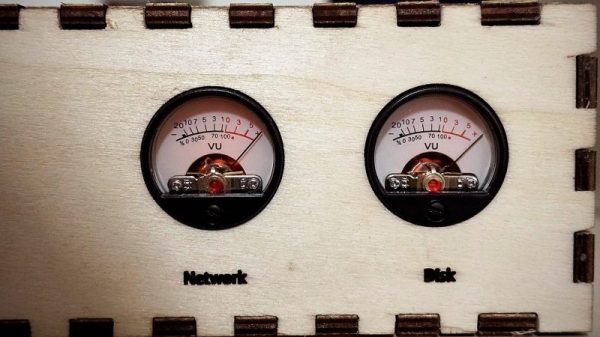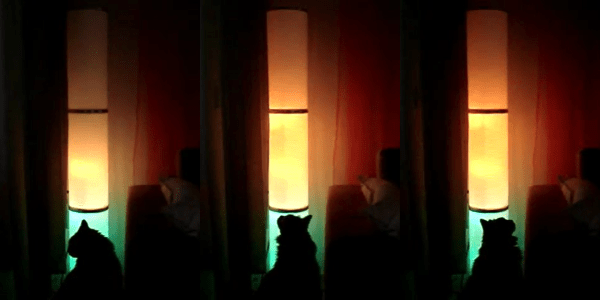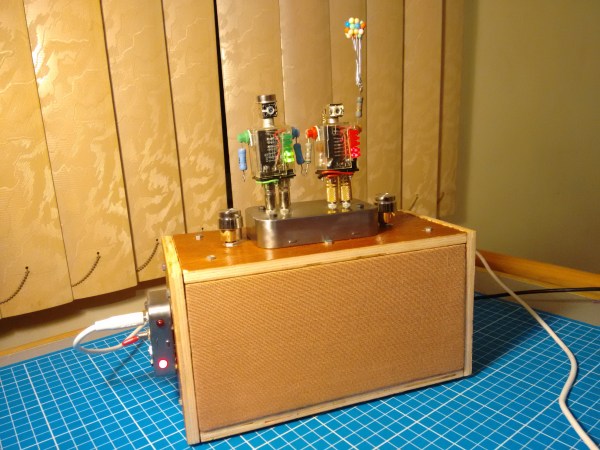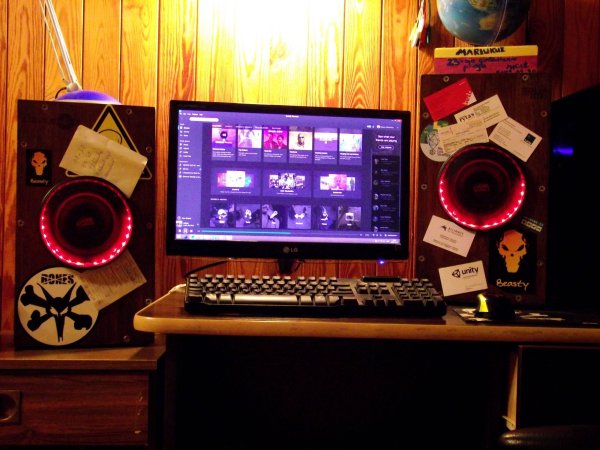Given its appearance in one form or another in all but the cheapest audio gear produced in the last 70 years or so, you’d be forgiven for thinking that the ubiquitous VU meter is just one of those electronic add-ons that’s more a result of marketing than engineering. After all, the seemingly arbitrary scale and the vague “volume units” label makes it seem like something a manufacturer would slap on a device just to make it look good. And while that no doubt happens, it turns out that the concept of a VU meter and its execution has some serious engineering behind that belies the really simple question it seeks to answer: How loud is this audio signal?
VU meter46 Articles
Ditch The Tapes, Put An Android In Your Deck
While we here at Hackaday never question why an individual took on a particular project, it surely doesn’t stop our beloved readers from grabbing their pitchforks and demanding such answers in the comments. Perhaps no posts generate more of this sort of furore than the ones which feature old audio gear infused with modern hardware. In almost every case the answer is the same: the person liked the look and feel of vintage hardware, but didn’t want to be limited to antiquated media.
 That sentiment is perhaps perfectly personified by the TapeLess Deck Project, created by [Artur Młynarz]. His creations combine vintage cassette decks with an Android phone small enough to fit behind the tape door. An Android application which mimics the look of a playing tape, complete with “hand written” track info, completes the illusion.
That sentiment is perhaps perfectly personified by the TapeLess Deck Project, created by [Artur Młynarz]. His creations combine vintage cassette decks with an Android phone small enough to fit behind the tape door. An Android application which mimics the look of a playing tape, complete with “hand written” track info, completes the illusion.
The output from the phone is tied into the deck where the audio signal from the tape head would have been, so the volume controls and VU meters still work as expected. Watching the meters bounce around while the animated “tape” plays on the screen really does look incredibly slick, though the effect is somewhat hindered by the fact the physical playback controls don’t seem to be implemented. Incidentally, the whole experience works better if the plastic window on the tape door is removed; that way you can utilize the touch and swipe interface [Artur] has in the software.
We’ve seen previous attempts to modernize the audio cassette experience, but they’ve tended to be more of a novelty than anything. But these decks are nice enough that you can like them non-ironically. Though if we’re talking about portable tape players, there’s only room for one in our cold mechanical hearts.
[Thanks to Nikolai for the tip]
Continue reading “Ditch The Tapes, Put An Android In Your Deck”
Repurposing Moving Coil Meters To Monitor Server Performance
Snazzy analog meters can lend a retro flair to almost any project, but these days they often seem to be retasked as indicators for completely different purposes than originally intended. That’s true for these Vu meters repurposed as gauges for a Raspberry Pi server, and we think the build log is as informative as the finished product is good-looking.
As [MrWunderbar] admits, the dancing needles of moving-coil meters lend hipster cred to a project, but getting his Vu meters to cooperate and display network utilization and disk I/O on his Raspberry Pi NAS server was no mean feat. His build log is full of nice details on how to measure the internal resistance of the meter and determine a proper series resistor. He also has a lengthy discussion of the relative merits of driving the meters using a PWM signal or using a DAC; in the end, [MrWunderbar] chose to go the DAC route, and the video below shows the desired rapid but smooth swings as disk and network usage change. He also goes into great depth on pulling usage parameters from psutil and parsing the results for display on the meters.
Looking for more analog meter goodness? We saw a similar CPU load meter a few months back, and there was this mash-up of Nixies and old meters for a solar energy CEO’s desk.
Continue reading “Repurposing Moving Coil Meters To Monitor Server Performance”
A Very Large VU Meter Indeed
It used to be a must-have on any hi-fi, a pair of moving coil meters or LED bar graphs, the VU meter. Your 1980s boombox would have had them, for example. VU, for “Volume Units”, is a measure of audio level, and the fashion for its visual measure in consumer audio equipment seems now to have largely passed.
The LED bar graph VU meters were invariably driven by the LM3915, a chip that contains a resistor ladder and a stack of comparators which can drive LEDs directly. [Juvar] has taken an LM3915, and used it to drive a set of opto-isolated triacs which in turn drive a stack of appropriately coloured mains LED bulbs concealed within an Ikea Vidja lamp. The result is a huge and very bright VU meter that is as much a lighting effect as it is a measure of sound level.
He’s posted a video of the lights in action, and we’ve placed it below the break. There is a cameo appearance from his cat, and one can’t escape the feeling that it is wasted on a small room and would be at its best before a dance floor. Still, it’s a neat lighting effect and a new use for a classic integrated circuit.
Adding Stereo VU Meters To A Turntable
A pleasing development for those with an interest in audio equipment from decades past has been the recent resurgence in popularity of vinyl records. Whether you cleave to the view that they possess better sound quality or you simply like the experience of a 12″ disk with full-size cover art and sleeve notes, you can now indulge yourself with good old-fashioned LPs being back on the shelves.
Behind the LEDs is the trusty LM3915, an integrated circuit which will no doubt be familiar to any reader whose earlier life was spent among 1970s and 1980s audio gear. Internally it’s a stack of comparators and a resistor ladder, and it simply turns on the required number of outputs to match the level on its input. He’s put a pair of them on a little PCB with an associated PSU regulator, and mounted the LEDs in a row of holes drilled in the MDF base board of the turntable following the edge of the platter. Power and audio come from the turntable’s circuit board, which contains a preamplifier and the USB audio circuitry. A traditional turntable with a low-level output would not be able to drive an LM3915 directly.
This is a relatively straightforward project and the turntable itself isn’t necessarily the most accomplished on the market, but it’s very neatly executed and looks rather pretty.
Turntable projects are not as common as you’d expect here at Hackaday, but we’ve had a few. There was this concrete example for instance, and a very pretty one using layered plywood.
Courtesy of SoMakeIt, Southampton Makerspace.
“What Is My Purpose?” You Amplify And Display Signals.
[Andy_Fuentes22] likes to stream music, but is (understandably) underwhelmed by the sound that comes out of his phone. He wanted to build something that not only looks good, but sounds good. Something that could stream music through a Chromecast or a Raspi, but also take auxiliary input. Something awesome, like the Junkbots Sound System.
The ‘bots, named LR-E (Larry) and R8-CHL (Rachel), aren’t just cool pieces of art. They’re both dead-bug-walking bots with an LM386-based amplifier circuit and an AN6884-based VU meter in their transparent, industrial relay bodies. LR-E is the left channel, and his lovely wife is the right channel. The best part is that they are wired into the circuit through their 3.5mm plug legs and the corresponding jacks mounted in the Altoids tin base.
[Andy] built this labor of love from the ground up. He started with some very nice design sketches and took a bazillion pictures along the way. We think it sounds pretty good, but you can judge for yourself after the break. If VU meters are your jam, here’s another that’s built into the speaker.
Continue reading ““What Is My Purpose?” You Amplify And Display Signals.”
This VU Meter Is Built Into The Speaker
Depending on the music you’re listening to, watching a VU meter bounce to the music is always a good time. So why not integrate the VU meter right into the audio source? That’s what [Matikas] did, and it’s pretty fantastic.
He started with a pair of speakers he had and picked up some NeoPixel LED strips. Carefully wrapping the LED strips around the inside circumference of each speaker, the LEDs fit behind the speaker grills, giving it a cool effect when they’re on.
To control the LEDs, he’s using an Arduino Uno (Atmega328p) which measures the audio level in order to modulate the LED output. A bit of software later (shared on GitHub if you’re interested!) and the VU meters were ready for action — check it out!

